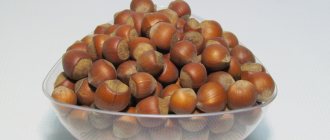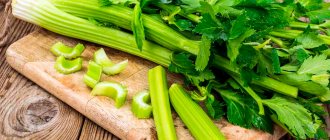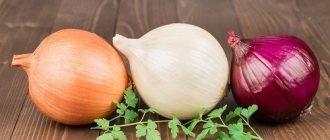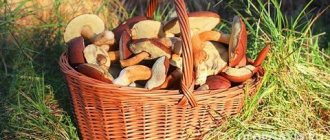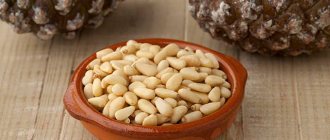Walnuts are loved by many, have high nutritional value and a large supply of vitamins, minerals and unsaturated fatty acids. However, not everyone knows how to properly store peeled walnuts. Our article will talk about how to stock up on healthy products in the fall and store them until the next harvest.
Walnuts are very high in calories (650 kcal per 100 g) and fatty, therefore, in order to preserve the product for a long time, it is necessary, as far as possible, to exclude the influence of light and air on it. Properly store shelled nuts in an airtight glass jar (container) in the refrigerator
Walnut quality check
After purchasing a product, you need to make sure that it is of high quality. All fruits should be viewed.
If you bought peeled kernels , they should be intact, without damage. If traces of mold are visible, such kernels can be thrown away without hesitation. Under no circumstances should such a product be used. You should selectively try several kernels. The fruit should not have a bitter taste. The color of the kernels should be golden, the taste should be sweetish. Such kernels are suitable for storing at home. They will retain all the properties and qualities.
When purchasing a product in a shell, you need to pay attention to the presence of dark spots. They indicate that the walnut is dried out or moldy. The smell of spoiled food is unpleasant and can cause vomiting. If the walnuts are expired, they will rattle loudly when shaken. When cracking a walnut, you need to pay attention to the presence/absence of yellow dust. Its presence indicates damage to the product.
The most optimal conditions and storage locations
The shelf life of walnuts directly depends on the conditions. The prepared product is best preserved at temperatures up to +10° C and humidity no more than 60%. In this case, the nuts should not be exposed to sunlight. Under the protection of the shell, the nucleoli will remain in suitable conditions for a year or even more.
If there are a lot of nuts, they can be packed in wooden boxes or cardboard boxes, then lowered into the basement. The cellar is also suitable for storage if it is dry and the temperature there does not drop below -5° C. At room temperature, nuts in the shell can last for six months or more. From time to time you need to open a couple of nuts and taste them. The kernels should not have a bitter taste or musty smell.
We recommend: Can milk be frozen and stored in the freezer: expert explanations
Cracked nuts are more capricious in this regard. They need to be properly prepared and then packaged in suitable containers. In the future, everything will depend on the created conditions. For example, kernels packed in a jar with a lid can be stored in the pantry for 21 days. A closed closet or nightstand may be a suitable storage location. When crushed, nuts can be stored for no more than 2-3 days. The darkening of the film covering the kernels will indicate that the process of deterioration has begun.
Not long term storage
There is no need to stock up on large quantities. It is better to make a reserve for a couple of weeks. After splitting the fruits and removing the kernels, you need to move them into a glass or plastic jar and close them tightly. It is permissible to place peeled walnuts in linen bags, tying them tightly. Then place the jar in a dark, dry, cool place. This place could be a refrigerator, balcony or closet. It must be taken into account that there should not be high humidity in the room where walnuts will be stored. It promotes the growth of mold. It is recommended to store shelled walnuts for up to six months. You can store hazelnuts and almonds in the same way. Recommended places and containers for storage:
- fridge;
- balcony;
- lumber room;
- glass/plastic containers;
- linen bags.
For direct consumption
This is the simplest and most correct option. Buy whole nuts and separate them into batches. Expect that you are going to eat each of them within 10-15 days. After cracking the nuts and removing the kernels, place them in a plastic or glass container and put them in a cool, dark place. This could be a balcony or the bottom shelf of the refrigerator. But rooms with high humidity are contraindicated: mold will grow on the nuts, and they will not be eaten.
Calcination
If you need to preserve the product for a long time, walnuts should be dried in a frying pan or in the oven. Calcination is especially important for those fruits that are purchased peeled in the markets. They need to be examined carefully. Good, whole kernels should be poured into a dry, hot frying pan. Dry by shaking the pan constantly for a few minutes. The product is not dried out much.
When the kernels begin to darken slightly, remove the pan from the heat. If you need to dry walnuts in the oven, the principle of action remains the same as in the first option. Only selected walnuts should be poured onto a clean, dry baking sheet. Then put in the oven at a temperature of 80-90°Ϲ. Dry for a quarter of an hour. You can dry walnuts at a higher temperature, reducing the time. Any of these methods requires constant monitoring of the oven. You can dry it in the oven by lining a baking sheet with parchment.
After this, the dried walnuts need to be poured into a suitable container to cool. After this, they must be transferred to a glass or plastic container and closed tightly. Then place the jar in a dark, dry, cool place. If all the rules are followed, walnuts can be stored from several months to a year. It is important to ensure that no moisture gets into the jars.
How to properly collect and peel nuts
To decide how to store shelled and in-shell walnuts, it is important to know the variety.
There are three types of fruits: early ripening, mid ripening, late. You need to start harvesting in August, September and October, respectively.
An indicator of ripeness is a cracked pericarp and fruit drop. It is important to start harvesting on time. If you are late, this will cause dyes from the pericarp to get inside, and the core will turn black.
If you collect nuts earlier, they will become wrinkled, lose weight, volume, and taste will deteriorate.
You should start work in sunny weather. If the amount of harvest is insignificant, then they are collected by hand using any convenient container. If harvesting takes place over a large area, a special roll is used.
It can collect fruits on flat and sloping terrain. If the nuts have fallen, they must be collected within 24 hours, and in rainy weather conditions, high humidity levels after 12 hours.
Problems can arise when trying to pick fruit from a tree. On the lower branches of large plants they can be removed by hand. To remove from high branches, you can shake the tree, use a stepladder and a long pole with a hook at the end.
How to peel a nut
There are several ways to remove the shell:
- In order for the shell to be easily removed, you need to leave the fruits in boiling water for 10 minutes, using enamel dishes. The water is drained and the core is easily removed when split with the tip of a knife.
- For cleaning, use pliers and a garlic press. It is important to regulate the pressing force so as not to damage the core.
- A hammer is suitable for removing the core. The fruits must be preheated for 10 minutes in an oven preheated to +220 degrees Celsius.
- Place the product in a bag or bag made of strong linen and tap the top with a hammer. It is important to monitor the force of the blows to avoid damaging the kernels.
Supplies for the holidays
If the purchase of a product was made for some event and not all of it was “left”, you need to do this. Pour the remaining mixture into a glass or plastic container. Cover the container with parchment and screw on the lid. The fruits are stored on the top shelf in the refrigerator.
It is important to ensure that no moisture gets into the jar. If it gets into the container, the fruit will be spoiled. The next time you use walnuts, you should taste them before eating. If there are no foreign odors and the color has not changed, then everything is in order. In this form, the shelf life of walnuts will be up to six months.
Freshness of walnuts
I learned from culinary reference books how to determine the freshness of nuts. I'm telling you:
| Factor 1 : the fresh product has a pleasant smell and sweet taste | |
| Factor 2 : spoiled fruits have a moldy shell and a slight bitterness in the kernels | |
| Factor 3 : fresh walnuts have whole and light kernels without the presence of any darkening, mold or larvae | |
| Factor 4: when shaking a dried nut, you can hear the kernel wobbling |
Long-term storage
If walnuts are purchased in large quantities for sale, they are stored at home as follows. In this option, proper storage involves the use of a freezer. Calcined dry walnut kernels must be wrapped in cling film. Place in a suitable container and place in the freezer. After the walnuts are removed from the freezer, they need to be dried. At home, this can be done in the oven. Walnuts should be dried at a temperature of 80-90°Ϲ. The shelf life in the freezer is up to a year.
- the kernels must be dry;
- You can place walnuts on film in layers, this will make it more convenient to put them in the freezer;
- It is permissible to increase the drying temperature by reducing the drying time;
- It is necessary from time to time to watch how the walnut “feels” in the oven so that the product does not burn.
Preparation
Shelled nuts are much more convenient to store, because they take up less volume. In addition, by purchasing a ready-to-use product, you do not need to waste time cleaning it.
First, the nuts should be sorted. All foreign matter must be removed. These are usually shell fragments, internal partitions, twigs and leaves. The kernels need to be inspected very carefully for damage and damage caused by insect pests. Bad nuts should be thrown away.
You definitely need to smell the product and pay attention to its color. Fresh kernels are light, without mold and have a characteristic nutty aroma.
If the nuts were bought from hand at the market, they should be soaked in a weak saline solution for at least 20 minutes for preventative purposes. Then the kernels are washed and placed in a colander.
Washed kernels must be dried. This will help destroy larvae, spores and evaporate remaining moisture. You cannot store peeled walnut kernels at home without preliminary heat treatment. This process is very simple but improves the quality of the product.
- You can pour nuts into a hot deep frying pan and, stirring constantly, fry them for about 15 minutes. The kernels should not be allowed to darken or burn.
- You can also heat the nuts in the oven. To do this, the kernels are scattered on a baking sheet in a layer of about 4 cm and calcined at a temperature of about 170.
When the raw materials have cooled, they can be stored.
Storing Unrefined Product
It is not always possible to properly store nuts in the refrigerator. Especially if there are a lot of nuts. If you need to store a large amount, it is better to purchase nuts in shells. They also dry out, like cleaned ones, but much more slowly. And they last longer than kernels. The shelf life of the product in the shell is also longer. The product should be handled as follows.
The nut should be sorted. Remove any remaining nut waste. Transfer to suitable glass or plastic containers of suitable size. Three-liter jars work well. Nuts are stored at temperatures from +10°Ϲ to -5°Ϲ. They are perfectly preserved. Storage duration is at least a year. If the sequence of actions was correct, the shelf life of the nuts may be longer than expected. You can store hazelnuts and almonds in the same way.
conclusions
We can conclude that peeled walnut kernels will be best stored in the freezer or in an airtight container on the bottom shelf of a household refrigerator. The most suitable conditions are:
- lower temperature without fluctuations,
- low humidity or at least within normal limits,
- lack of sunlight,
- completely sealed packaging.
By providing proper storage conditions for this product, its shelf life can be significantly extended.
,Meat belongs to the category of perishable products, and it can be stored for up to two years. ,When too many dishes have been prepared and it was not possible to cope with them at once, it is necessary, Flowering plants are designed to decorate a person’s life, but they themselves are short-lived. How to make chrysanthemums. The article briefly describes the beneficial properties and composition of badger fat. Detailed recommendations are given
There are always nuts in the house
Everyone decides for themselves how many nuts to buy. It all depends on what and when they will be used. Before purchasing large quantities, buyers should consider where the product will be kept. How long they will last, whether they will retain their properties - it all depends on proper adherence to the rules of preparation and storage.
The storage duration always fluctuates upward. You can safely assume that a year is a year plus a month or two. Sometimes this is very important, especially when storing fruits for sale. The expiration date is also shifted to the same dates.
Hazelnut (hazelnut)
Some people grow hazelnuts in their own summer cottage. After harvesting, it cannot be immediately stored for storage. It needs to dry out and ripen. To do this, the hazelnuts are sent to a dry and well-ventilated room for several days. At room temperature in shell, nuts will be stored for quite a long time - up to 2 years.
Gourmets are sure that hazelnuts should be peeled no earlier than an hour before cooking. But if it is not possible to consume the peeled kernels immediately and you have to send them for storage, then try to maintain the air temperature within +3-10 °C, and the humidity no higher than 15%. A cool pantry is best for this purpose. In such conditions, hazelnuts can last up to 3-4 months. If you prefer roasted hazelnuts, do not store them as such, but cook them immediately before use.
Also read: Sauerkraut - how to store and where?
Which nuts can be stored for a long time?
Nuts are designed for long-term storage. They were found by archaeologists during excavations of the most ancient mounds and pyramids of Egypt. Moreover, the specimens found had excellent taste and aroma.
This fact is explained by the fact that in the pyramids, closed from environmental influences, an even temperature and humidity regime was maintained.
Modern realities do not allow storing nuts for such a long time, due to constant exposure to heating devices, sunlight and high levels of humidity in apartments.
The general rule is that whole nuts can be stored (under certain conditions) for up to six months, and peeled ones - no more than 2 months.
How to store?
You can store shelled walnuts in different ways. But for long-term storage, nut fruits need preparation.
Step 1 - Cleaning
Not all nut kernels are suitable for long-term storage. Therefore, before peeling, you need to remove fruits with cracks and black spots. Also remove any remaining peel and shell without the kernel inside.
Then crack the fruit to extract the kernels. You can do this in the following ways:
- Using a hammer and a bag . Wrap some of the nuts in a bag/burlap and tap them with a hammer. The bag is needed to prevent the shells from flying all over the room. The force of the blow should be sufficient to force the shell to open, but not too strong. Otherwise, the tender kernel will be flattened. It will not be stored in this form.
- Using a nut cracker . Insert a nut into the nutcracker and squeeze the handles. The shell will crack, but will not shatter. Take out the kernel and start peeling the new fruit.
- Using boiling water and a knife . Boil a large pot of water and place the nuts in it for 0.5 hours. Then take them out and insert a knife blade between the shell flaps - they will separate. After treatment with boiling water, you can even peel it with your hands, squeezing the fruits in your fists.
- Using the oven and your hands . Heat the oven to a temperature of +200...+220 oC. Place the nuts there for 10-15 minutes. Then remove and cool. After this, the shells can be easily removed by hand.
Advice! If you don’t have a special nut cracker and don’t want to peel the fruits with your hands, use whatever you can get your hands on at home. This could be a wrench or pliers, as well as some machine tools.
Step 2 - wash
You need to wash the peeled nuts to remove dust and small shell particles. You can do without this procedure: it will not affect the shelf life in any way.
But then you will have to wash the nut kernels before each use. If this is not done, you will end up with shell remains while eating.
Here's how to wash it properly:
- Pour warm water into a basin.
- Dip the chopped nuts into it.
- Mix them with your hands.
- Drain the water and add new water.
- Stir the fruits again.
- Repeat steps 4 and 5 until the water runs clear.
- Remove the kernels with your hands or a slotted spoon.
- Lay them out on a paper or cotton towel and let them dry.
Attention! For the last time, do not drain the water, but remove the kernels from it. If you do the opposite, solid particles of the shell will be lost in the nut mass. When you remove the nut with your hands, the particles remain floating below.
Step 3 - storage
You can store nuts in several ways; we will describe each of them and indicate how long they can be stored in each case.
Important! Only completely dried fruits are suitable for storage. If they are left wet, then in just a few days their surface will become covered with mold. And it will no longer be possible to eat such nuts.
In room conditions
When the nuts are completely dry, place them in a canvas bag or jar. So they can lie for 2-3 weeks without loss of quality.
To store in bags for up to 2 months, and in jars for up to 3 months, dry them at high temperatures using one of the following methods:
- Oven . Keep the kernels for 10 minutes in an oven preheated to 100°C.
- Frying pan . Heat the frying pan and heat the fruits in it for 15 minutes, stirring with a spoon.
- Battery . If the batteries are very hot, they can also be used for drying. It is convenient to dry in containers or halves of plastic bottles. The drying time is 24 hours.
Important! Do not pack kernels in a plastic bag. They will be locked in them and begin to rot.
In the refrigerator or freezer
To store in the refrigerator, use only nuts that have been roasted in a frying pan or baking sheet. Otherwise, condensation will form in the container in which they lie, which will lead to rotting of the kernels.
To prevent them from absorbing foreign odors, store them exclusively in glass containers with tight lids. Other containers will not protect the fruits from the smell of other products. You can store this way for 6 months.
You can store the kernels in the freezer without first calcining them. But then it is advisable to place them not in an ordinary plastic bag, but in a special vacuum bag. In this case, they can be stored for 1 year.
Canning
The longest storage method is canning nuts. Here are some simple recipes:
- Nuts with honey. Place the kernels in a jar and fill with fresh, not yet candied bee honey. To reduce honey consumption, the fruits can be twisted through a meat grinder. Then 1 kg of kernels will require only 0.5 kg of honey. So nuts can be stored for 2-3 years.
- Caramelized nuts . Place 5 tbsp on a hot frying pan. l. sugar (with top) and add 15 ml of water, 20 g of butter and 5 ml of lemon juice. Stir the mixture with a spoon and wait for the sugar to melt. After the composition boils, put 100 g of nut kernels into it. Stir them together and place them on a parchment-lined plate. Wait for it to cool down. The shelf life in room conditions increases to 6 months, and in the refrigerator - up to 1 year.
- Preserved nuts . Place the kernels in a jar and fill them to the top with cognac. This way they can be stored for several years, but the use of the product will be limited. It can be served as a dessert (adults only) or used in fruit salads as an ingredient with a unique taste and aroma.
Walnut is a valuable and nutritious product. But in its purified form it is poorly stored, and therefore its kernels have to be carefully prepared. But your efforts will subsequently be rewarded with delicious fruits without bitterness, which can be eaten plain or added to various dishes: cereals, cakes and other desserts.


